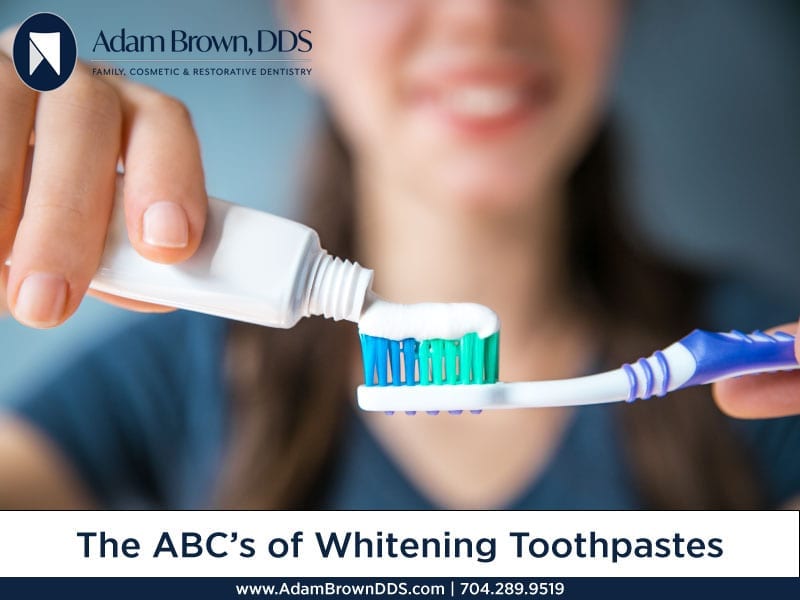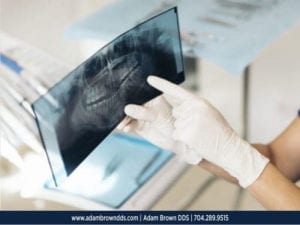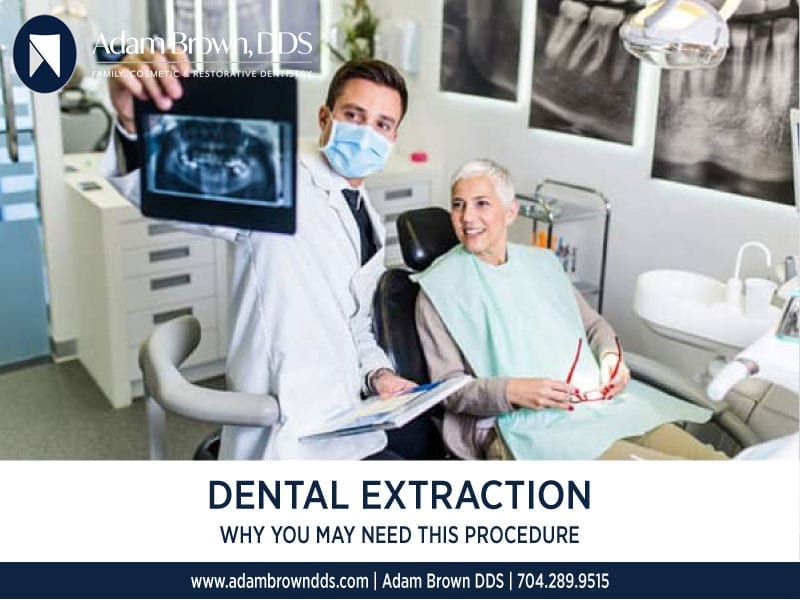The ABC’s of Whitening Toothpaste
Teeth whitening is on the rise across the country. In 2018 alone, over 40.5 million people used some form of bleaching product to improve their smiles. Whitening toothpaste, in particular, is marketed as an affordable way to brighten your smile, but is it actually doing more harm than good?

A Brief History of Tooth Whitening
Despite its recent rise in popularity, you might be surprised to learn that the process of teeth whitening has been around for over 4,000 years. Egyptians were some of the first known people to follow the practice. They used ground pumice stone soaked in vinegar to improve their overall smiles. As time progressed, so did the methods. During the 1600’s people actually relied on their barbers to whiten their teeth in addition to cutting their hair. The barber would file the teeth down and then soak them in nitric acid as a way to whiten someone’s smile. Fluoride was discovered as a way to protect teeth in the early 19th century and toothpaste as we currently know it began to make its way to the public around 1945. Finally, in 1989, Rembrandt officially launched the first whitening toothpaste into the grocery market effectively empowering the general public to whiten their teeth with an affordable over-the-counter product.
Today there are hundreds of different brands of whitening toothpaste to choose from and not all are created equal. With everything from big names to natural alternatives vying for space on the shelves, it’s hard to know which path to take.
Understanding Extrinsic vs. Intrinsic Tooth Whitening
In order to understand how whitening toothpaste affects your smile, it’s helpful to first understand how the process of whitening works. When we observe stains on our teeth, we are generally seeing two types, extrinsic and intrinsic. Extrinsic stains are considered surface stains whereas intrinsic stains run deeper inside the tooth and are more difficult to remedy.
| Causes of extrinsic stains include: | Causes of intrinsic stains include: |
| Coffee or tea | Tooth decay |
| Dark fruits such as blueberries and cherries | Overuse of fluoride |
| Red wines | Cracks/Scratches in enamel |
| Dark vegetables such as carrots and beets | Genetics |
| Smoking or Chewing Tobacco | Certain Antibiotics (Tetracycline based) |
Over the counter products such as whitening toothpaste and strips are only strong enough to handle extrinsic stains. For intrinsic stains, it is recommended that you see a cosmetic dentist to learn more about safe, professional procedures that may be available to you.
How Whitening Toothpaste Works
Contrary to its name, one of the main ways whitening toothpaste works to remove stains is through abrasion. Tiny silica particles are added to the paste and are used to essentially “scratch” the stains off of your teeth. While this method may initially remove some of the discolorations, overuse can actually cause staining to become worse. This is because the abrasive material doesn’t just eliminate the tinge, it also scratches through the protective enamel. Loss of enamel can eventually lead to deeper, more permanent intrinsic staining. As the unprotected dentin becomes increasingly exposed to everyday food and drink, discoloration is able to penetrate past the surface and into the underlying layers of the tooth below.
In addition to abrasive particles, whitening toothpaste can also contain bleaching agents. The two most common bleaching agents used to whiten teeth in toothpaste include hydrogen peroxide and carbamide peroxide. While these ingredients are shown to be effective at whitening teeth, they should always be used in moderation as overuse can lead to demineralization of your teeth and if swallowed, can potentially inflame your internal organs or cause internal bleeding.
Common Dental Issues that Arise From the Use of Whitening Toothpaste
Some common dental issues that arise when using whitening toothpaste include sensitivity, retracting gum lines, and even increased discoloration as the enamel breaks down and stains are able to penetrate to deeper levels inside the tooth.
Sensitivity – sensitivity can occur for a number of reasons. Some of these include overuse of whitening toothpaste, keeping the paste on your teeth for an extended period of time, and allowing the toothpaste to penetrate through cracks or openings that are exposing the inner dentin. It should be noted that it’s never a good thing to feel sensitivity from the use of whitening toothpaste. If you have this issue, stop using the toothpaste and consult with your dentist for alternative options.
Receding Gums – if whitening products aren’t used properly and in moderation, they can irritate the gums and cause them to recede. Receding gum lines are harmful for a number of reasons. Healthy oral tissue is important not only to help prevent your teeth from getting infected but also to protect the internal area of the tooth from negative exposure to bacteria and germs. When whitening toothpaste isn’t used properly, it can cause permanent damage to gum lines, causing them to recede, and eventually exposing the vulnerable dentin and root below.
Loss of Enamel – both abrasive particles and bleaching agents can lead to a loss of enamel over time. It’s important to understand that enamel does not grow back so great care should be taken any time you choose to use a whitening product. Always consult with your dentist before using over-the-counter products so they can instruct on the safest way to achieve the results you want.
The Dangers of Children Using Whitening Toothpaste
While whitening toothpaste is problematic for adults, it can be even more detrimental to children. The American Academy of Pediatric Dentistry recommends that all children under the age of 15 refrain from teeth whitening. This is because a child’s enamel is thinner than an adult’s and the nerve and dentin on the inside of the tooth are still developing. Tooth enamel isn’t fully calcified until approximately two years after the permanent teeth finish emerging. The Pediatric Safety Organization warns of teenage use of whitening products in particular. Teenagers are at a greater risk for misuse and/or overuse because they tend to want to hasten or intensify the process without fully understanding the consequences. This can cause the developing teeth to become over-oxidized, resulting in a permanent breakdown of the teeth’s structure.
In general, improper use of these types of whitening products before a child’s smile is fully developed can result in increased sensitivity, demineralization of the enamel, and variations in tooth color. Children with braces or other mouth hardware are also at risk of uneven coloring to their teeth, as the portion of the tooth that is covered will not be affected by the whitener and will end up showing as a different shade from the exposed portions of the teeth.
Natural Alternatives to Traditional Teeth Whitening
Having whiter teeth doesn’t necessarily equate to a healthier smile. However, if you decide you want to brighten your smile using safer, more natural methods, you have a handful of options at your disposal.
Oil Pulling – oil pulling has been shown to have numerous benefits for oral health. In addition to killing the bacteria in your mouth that is responsible for plaque and gum disease, it also helps to reduce inflammation. Currently, there is no definitive evidence showing that oil pulling whitens teeth, however, many people who use the practice claim they notice a visible whitening of their teeth. Add to the fact that it’s a safe and beneficial method overall, and there’s really no reason not to give it a try to see if it works for you.
To try oil pulling, simply choose an oil of your choice (recommended options include coconut, olive, and sesame) and swish it around in your mouth for 5 to 20 minutes. You can also use a soft toothbrush to apply the oil or wipe it over your teeth with a washcloth.
Baking Soda – Sodium Bicarbonate, or baking soda as it is commonly called, is another natural product that can help to whiten your teeth. When used properly, it can reduce plaque, fight bad breath, help maintain a healthy pH inside your mouth, and assist in the overall whitening of your teeth. For the safest use with regards to oral health, it is recommended that you mix a teaspoon of baking soda with enough water to form a paste. Gently apply the mixture using either your finger or a soft toothbrush and let it sit on your teeth for approximately two minutes followed by a thorough rinse. You can apply this tincture multiple times per week for best results. Just be careful to apply gently as baking soda is abrasive and can harm your enamel if applied too strongly and too often.
Apple Cider Vinegar – apple cider vinegar is another effective way to help whiten your teeth. The reason vinegar works as a whitener is because it contains acetic acid which helps to remove the plaque and clean teeth. To use vinegar effectively as a whitener, mix one part vinegar with three parts water and swish in your mouth for about a minute. Be sure to spit it out once you’re finished. A couple of tips to remember when using Apple Cider Vinegar include:
- Always dilute the vinegar with water before swishing. Straight vinegar has a highly acidic pH and will damage the enamel on your teeth if overused.
- Only use organic brands of apple cider vinegar. This is because non-organic brands are typically pasteurized, which removes the majority of the beneficial properties contained in the vinegar.
- Be sure to wait at least 30 minutes before brushing your teeth after use. Residual vinegar remains on your teeth and can harm your enamel if you brush while it’s still present.
Brush and Rinse After Eating and Drinking – being vigilant about your teeth after eating and drinking can really make a difference in the amount of staining you accumulate over time. Make an effort, when possible, to brush your teeth after eating food and drink so that you can alleviate stains before they happen. If you drink coffee or other staining drinks, try to follow it up with a glass of water to help mitigate the effects. Regular coffee drinkers or smokers may also want to consider a visit to the dentist every three months instead of six to help keep their smile bright and healthy.
Naturally, one of the best ways to keep a sparkling, white smile is to take care of your teeth on a daily basis. Brush at least twice a day for two minutes at a time, floss regularly, and visit your dentist every six months. If you are interested in learning more about professional teeth whitening, please feel free to call our office. We’ll be happy to help answer any questions you might have and discuss how we can safely and effectively help you to achieve a brighter, whiter smile.
– Julie Mastbrook
Works Cited
“Apple Cider Vinegar Teeth Whitening: Can You Safely Use Apple Cider Vinegar to Whiten Teeth?” Emergency Dentists USA, www.emergencydentistsusa.com/apple-cider-vinegar-teeth-whitening/.
“Apple Cider Vinegar vs. Organic Apple Cider Vinegar.” LIVESTRONG.COM, Leaf Group, www.livestrong.com/article/107959-apple-cider-vinegar-vs.-organic/.
Axe, Josh. “6 Ways to Naturally Whiten Your Teeth.” Dr. Axe, 9 Mar. 2018, draxe.com/6-ways-to-naturally-whiten-your-teeth/.
“History of Toothpaste – Toothbrush History.” History of Toothpaste – Toothbrush History, www.colgate.com/en-us/oral-health/basics/brushing-and-flossing/history-of-toothbrushes-and-toothpastes.
“Is Teeth Whitening Safe For Children?” Kids Dental Online – Plano & Carrollton, www.kidsdentalonline.com/dental-topics/teeth-whitening-safe-children/.
Lee, Sean S., et al. “Tooth Whitening in Children and Adolescents: A Literature Review.” American Academy of Pediatric Dentistry, Pediatric Dentistry, 17 Aug. 2005, www.aapd.org/globalassets/media/publications/archives/lee-27-5.pdf.
Pesce, Nicole Lyn. “The Dark Side of Teeth-Whitening Strips.” MarketWatch, 10 Apr. 2019, www.marketwatch.com/story/the-dark-side-of-teeth-whitening-strips-2019-04-10.
“The Risks of Tooth Whitening Toothpastes | Winston Salem Dentist.” Distinctive Dental, 30 Nov. 2017, www.distinctivelydental.com/can-whitening-toothpastes-damage-teeth/.




